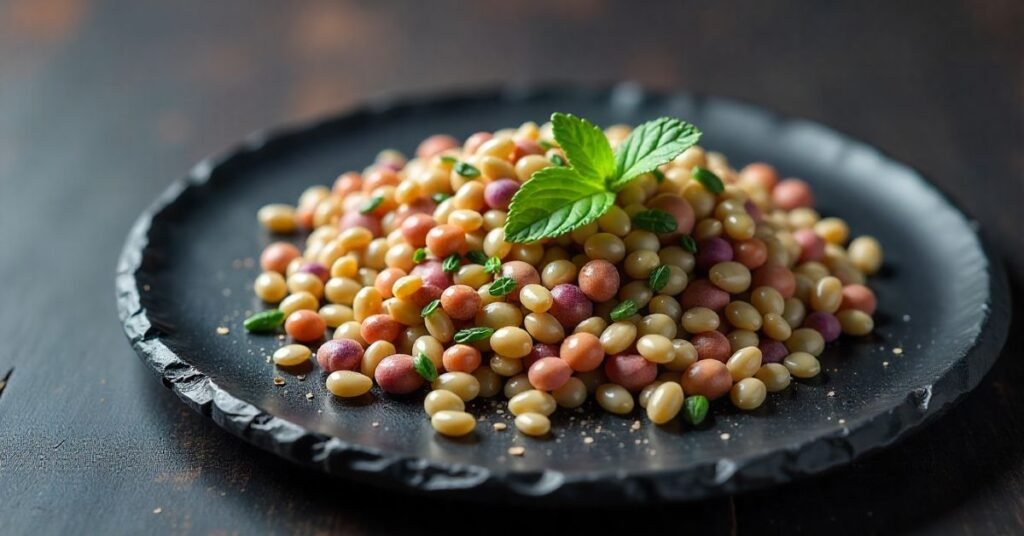Introduction
Methi, also known as fenugreek, is a leafy herb grown for its seeds and leaves.Its unique flavor makes it a popular ingredient in cooking. The plant is easy to grow at home with little effort.
You can add fresh methi leaves directly from your garden to your food. It is healthy, organic, and saves you trips to the market. Growing it at home also gives you a sense of joy and freshness.
Methi grows well in pots, containers, or a small patch of soil. It needs sunlight, regular watering, and well drained soil. With a few simple steps, you can enjoy fresh methi leaves in just a few weeks.
A Word About Fenugreek
Fenugreek, commonly known as Methi, belongs to the legume family and is valued for both its seeds and leaves. The seeds are used as a spice, dried leaves as a herb, and fresh leaves as a nutritious vegetable. Beyond cooking, fenugreek is also used in cosmetics, soaps, and medicines due to its many health benefits, such as easing joint pain, controlling blood sugar, and supporting hair growth. As a nitrogen fixing plant, it enriches the soil and grows well even in poor conditions, making it both versatile and beneficial.
Fenugreek Overview

| Category | Details |
| Genus Name | Trigonella foenum graecum |
| Common Name | Fenugreek |
| Plant Type | Annual Herb |
| Light Needs | Full Sun to Partial Sun |
| Height | Up to 2 Feet |
| Width | 3 to 6 Inches |
| Flower Colors | Purple, White, Yellow |
| Foliage Color | Blue, Green |
| Propagation | By Seeds |
How To Grow Methi at Home
Growing fenugreek (methi) is simple and rewarding. From seed to harvest, the plant takes only about 30 days. With little care, you can enjoy fresh, green methi leaves right at home.
Preparation Comes First
Choose a sunny spot that gets 4 to 5 hours of direct sunlight daily. In containers or garden beds, fenugreek grows well, but transplanting it is not recommended. It thrives best in warm soil, so in North India, plant it between March to April or October to November. In South India, it can be grown almost all year. For better germination, soak seeds overnight in room temperature water and drain before planting.
Let’s Get Growing
Select a container or garden space with good drainage. Cover seeds evenly with soil about 1/4 inch thick. Water gently to keep the soil moist but never waterlogged. Seeds sprout quickly, and within 3 to 4 weeks, plants will reach 6 inches tall and be ready for harvest.
Container Growing
Fenugreek grows well in shallow pots, containers, or grow bags. Use a wide planter about 6–8 inches deep with drainage holes.

Add compost and potting soil to it. Place the pot in a sunny spot like a windowsill, balcony, or patio and sprinkle seeds over the soil.
Light
Fenugreek grows best in full sun. In hot climates, it is tolerant of partial shade. More sunlight gives better flowers and pods.
Soil and Water
The plant needs well drained soil. It improves soil by fixing nitrogen, even in poor conditions. You should water your plants regularly, but avoid overwatering to prevent root rot.
Temperature and Humidity
Fenugreek loves warm and dry conditions. Temperatures between mild and hot are best for growing it. Cool and wet climates slow down its growth.
- Thrives in warm to hot temperatures.
- Prefers dry over humid conditions.
- In cooler areas, plant near a sunny wall or fence.
- Avoid excessive moisture to prevent fungal diseases.
Fertilizer
Fenugreek usually grows well without fertilizer. It enriches the soil naturally by fixing nitrogen. It is possible, however, to improve growth by adding compost or aged manure. This also makes the soil healthier for future crops. Use organic matter instead of chemical fertilizers for the best results.
Pruning
Pruning is optional. Pinch off the top shoots early to make plants bushier. Avoid pruning once flowers start forming.
Managing Pests & Diseases
Fenugreek is generally hardy, but a few pests and diseases may affect its growth.
Pests
- Aphids: Small sap sucking insects that feed on tender plant parts, slowing growth.
- Solution: Spray neem oil to control infestations.
Diseases
- Root Rot: Causes yellowing, wilting, and stunted growth. Usually fatal to plants.
- Prevention: Use well drained soil to avoid waterlogging.
- Prevention: Use well drained soil to avoid waterlogging.
- Powdery Mildew: White, powdery spots on leaves, flowers, and stems in later stages.
- Solution: Apply neem oil when spots appear.
- Solution: Apply neem oil when spots appear.
- Charcoal Rot: Leads to leaf wilting and dropping.
- Prevention: Add organic manure and use mulching to maintain soil moisture.
Harvesting
Fenugreek leaves are ready to pick within 30 to 40 days of sowing. Gently snip the top third of mature stems, allowing the rest to keep growing and branching. The leaves regrow in about 15 days, so you can harvest multiple times until the plant starts flowering. For seeds, wait 3 to 5 months as small pods form, each carrying 15 to 17 yellowish brown seeds that can be collected once dried.
Health Benefits of Fenugreek
Fenugreek is not only flavorful but also packed with health-boosting properties.

- Helps With Diabetes
- Lowers blood glucose levels.
- Improves glucose tolerance and cholesterol levels.
- Works well alongside other antidiabetic medicines.
- Lowers blood glucose levels.
- Promotes Breast Milk Production
- Supports healthy breast milk supply in mothers.
- May influence hormones that aid milk production.
- Helps babies gain healthy weight.
- Supports healthy breast milk supply in mothers.
- Other Benefits
- Relieves menstrual pain.
- Helps with appetite control.
- Supports healthy cholesterol levels.
- Relieves menstrual pain.
Conclusion
Fenugreek is a simple plant with many uses. It grows easily at home and enriches the soil. Natural health benefits are provided by its leaves and seeds. From managing diabetes to boosting wellness, this herb is truly valuable. Growing fenugreek is a rewarding experience for both kitchen and garden.
FAQs
1. How long does fenugreek take to grow?
Fenugreek leaves are ready to harvest in 30–40 days, while seeds take 3–5 months to mature.
2. Can fenugreek be grown in pots?
Yes, fenugreek grows well in shallow pots or containers with good drainage.
3. How often should I water fenugreek?
Water regularly to keep the soil moist but avoid overwatering, as soggy soil causes root rot.
4. What are the main health benefits of fenugreek?
It helps manage diabetes, supports milk production, eases menstrual pain, and lowers cholesterol.
5. Does fenugreek improve soil quality?
Yes, Having nitrogen fixing properties, fenugreek makes the soil more fertile.


